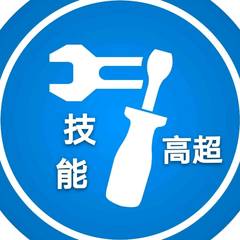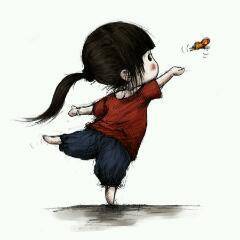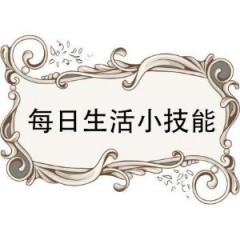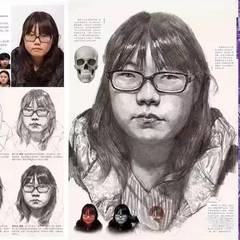英语四六级翻译中民族传统考点
中国龙
对龙图腾他的崇拜在中国大约已绵延了八千多年。中国龙是古人将鱼、蛇、马、牛等动物与云雾、雷电等自然天象集合而成的一种神物。中国龙的形成与中华民族的多元融合过程同步。在中国人的心目中,龙具有振奋腾飞、开拓变化的寓意和团结凝聚的精神。
ChineseDragonDragontotemworshipinChinahasbeenaroundforthelast8,000years.TheancientsinChinaconsideredthedragon(orloong)afetishthatcombinesanimalsincludingthefish,snake,horseandoxwithcloud,thunder,lightningandothernaturalcelestialphenomena.TheChinesedragonwasformedinaccordancewiththemulticulturalfusionprocessoftheChinesenation.TotheChinese,thedragonsignifiesinnovationandcohesion.
秧歌舞
秧歌舞是中国汉族的一种民间传统舞蹈,通常在北方省份表演。秧歌舞者通常穿上明亮多彩的表演服装,他们的表演动作有力迅速。在农历春节、元宵节等节日期间,人们一旦听到锣鼓声,不管外面天气有多冷,他们都会蜂拥到街上看秧歌舞表演。近年来,中国东北某些城市的老年人自发组织了了秧歌队,队员常年通过跳秧歌舞来保持健康,同事他们也乐在其中。
YangkoisoneoftraditionfolkdanceofHaninChina.Itisusuallyperformedinnorthernprovinces.Thedancersusuallywearcolorfulandlightcostumes,andtheperformanceispowerfulandrapid.DuringsomefestivalssuchasSpringFestival,LanteinFestival,ifpeoplehearthesoundofdrumandgong,nomatterhowcoldtheweatheris,theywillcometostreetandappreciatetheYangko.Recentyears,theoldpeopleincityofeast-northernofChinaorganizedtheteamofYangkobythemselves,theteamerskeeptheirhealthbydancingYangkothewholeyear.
长城
长城是人类创造的世界奇迹之一。如果你到了中国却没去过长城,就想到了巴黎没有去看看菲尔铁塔,或者就像到了埃及没有去看金字塔一样。人们常说:不到长城非好汉。"实际上,长城最初只是一些断断续续的城墙,直到秦朝统一中国后才将其连城长城。然而,今天我们看到的长城——东起山海关,西至嘉峪关——大部分都是在明代修建的。
TheGreatWallisoneofthewondersoftheworldthatcreatedbyhumanbeings!IfyoucometoChinawithoutclimbingtheGreatWall,it'sjustlikegoingPariswithoutvisitingtheEiffelTower;orgoingtoEgyptwithoutvisitingthePyramids!Menoftensay,"HewhodoestnotreachtheGreatWallisnotatrueman."Infact,itbeganasindependentwallsfordifferentstateswhenitwasfirstbuilt,anddidnotbecomethe"GreatWall"untiltheQinDynasty.However,thewallweseetoday,startingfromShanhaiguanPassintheeasttoJiayunguanPassinthewest,wasmostlybuiltduringtheMingDynasty.
饺子
饺子是深受中国人民喜爱的传统食品。相传为古代医圣张仲景发明。饺子的制作是包括:
1)擀皮、2)备馅、3)包馅水煮三个步骤。其特点是皮薄馅嫩,味道鲜美,形状独特,百食不厌。民间有好吃不过饺子"的俗语。中国人接亲待客、逢年过节都有包饺子吃的习俗,寓意吉利。对崇尚亲情的中国人来说,更岁交子"吃饺子,更是欢度除夕、辞旧迎新必不可少的内容。
DumplingsDumplingsareoneoftheChinesepeople’sfavoritetraditionaldishes.AccordingtoanancientChineselegend,dumplingswerefirstmadebythemedicalsaint---ZhangZhongjing.Therearethreestepsinvolvedinmakingdumplings:1)makedumplingwrappersoutofdumplingflour;2)preparethedumplingstuffing;3)makedumplingsandboilthem.Withthinandelasticdoughskin,freshandtenderstuffing,delicioustaste,anduniqueshapes,dumplingsarewortheatinghundredsoftimes.There’sanoldsayingthatclaims,Nothingcouldbemoredeliciousthandumplings".DuringtheSpringFestivalandotherholidays,orwhentreatingrelativesandfriends,Chinesepeopleliketofollowtheauspiciouscustomofeatingdumplings.ToChinesepeoplewhoshowhighreverenceforfamilylove,havingdumplingsatthemomenttheoldyearisreplacedbythenewisanessentialpartofbiddingfarewelltotheoldandusheringinthenewyear.
针灸
针灸是中医学的重要组成部分。按照中医的经络理论,针灸疗法主要是通过疏通经络、调和气血,来达到阴阳归于平衡,使脏腑趋于调和之目的。其特点是内病外治"。主要疗法是用针刺入病人身体的一定穴位,或用艾火的温热刺激烧灼病人的穴位,以达到刺激经络。治疗病痛的目的。针灸以其独特的优势,流传至今并传播到了世界,与中餐、功夫、中药一起被海外誉为中国的新四大国粹"。
AcupunctureisanimportantpartoftraditionalChinesemedicine(TCM).Inaccordancewiththemainandcollateralchannels"theoryinTCM,thepurposeofacupunctureistodredgethechannelandregulateqiandblood,soastokeepthebody’syinandyangbalancedandachievereconciliationbetweentheinternalorgans.ItfeaturesintraditionalChinesemedicinethatinternaldiseasesaretobetreatedwithexternaltherapy".Themaintherapyofacupunctureinvolvesusingneedlestopiercecertainacupointsofthepatient’sbody,oradoptingmoxibustiontostimulatethepatient’sacupointssoastostimulatethechannelsandrelievepain.Withitsuniqueadvantages,acupuncturehasbeenhandeddowngenerationaftergenerationandhasnowspreadallovertheworld.Nowadays,acupuncture,alongwithChinesefood,kungfu(otherwiseknownasChinesemartialarts),andtraditionalChinesemedicine,hasbeeninternationallyhailedasoneofthefournewnationaltreasures."
中国功夫
中国功夫即中国武术,是将技击寓于搏斗和套路运动之中的中国传统体育项目,承载着丰富的中国民族传统文化。其核心思想是儒家的中和养气之说,同时兼容了道家、释家的思想。中国武术源远流长、流派林立、拳种繁多,讲究刚柔并济、内外兼修,蕴含着先哲们对生命和宇宙的参悟。后世所称十八般武艺,主要指:徒手拳艺,如太极拳、形意拳、八卦掌等;器械功夫,如刀枪剑戟、斧钺钩叉等。
ChineseKungFuChinesekungfu,orChinesemartialarts,carriestraditionalChinesecultureinabundance.ItisatraditionalChinesesportwhichappliestheartofattackanddefenceincombatandthemotionsengagedwithaseriesofskillandtricks.ThecoreideaofChinesekingfuisderivedfromtheConfuciantheoryofboththemeanandharmony"andcultivatingqi"(otherwiseknownasnourishingone’sspirit).Meanwhile,italsoincludesthoughtsofTaoismandBuddhism.Chinesekungfuhasalonghistory,withmulti-varioussectsandmanydifferentboxingstyles,andemphasizescouplinghardnesswithsoftnessandinternalandexternaltraining.Itcontainstheancientgreatthinkers’ponderingoflifeandtheuniverse.Theskillsinwieldingthe18kindsofweaponsnamedbythelatergenerationsmainlyinvolvetheskillsofbare-handedboxing,suchasshadowboxing(Taijiquan),formandwillboxing(Xingyiquan),eighttrigrampalm(Baguazhang),andtheskillsofkungfuweaponry,suchastheskillofusingswords,spears,two-edgedswordsandhalberds,axes,tomahawks,kooks,prongsandsoon.
汉字
汉字是从原始人用以记事的简单图画,经过不断演变发展最终成为一种兼具音、形、意韵的独特文字。现存中国古代最早成熟的文字是甲骨文,被认为是现代汉字的初形。此后,汉字又经历了金文、隶书、楷书、草书、行书等不同的阶段。汉字结构外圆内方,源于古人"天圆地方的观念。汉字有五种基本笔画,即:横、竖、撇、捺、折。
Chinesecharacterswereinitiallymeanttobesimplepicturesusedtohelppeoplerememberthings.Afteralongperiodofdevelopment,itfinallybecameauniquecharactersystemthatembodiesphoneticsound,image,idea,andrhymeatthesametime.Thewritingsystem,whichwasextremelyadvancedinancienttimes,beganwithinscriptionsonbonesandtortoiseshells,andtheseareregardedastheoriginalformsofChinesecharacters.Afterwards,Chinesecharacterswentthroughnumerouscalligraphicstyles:bronzeinscriptions,officialscript,regularscript,cursivescript,runningscript,etc.Chinesecharactersareusuallyroundoutsideandsquareinside,whichisrootedinancientChinesebeliefsofanorbicularskyandarectangularEarth.ThefivebasicstrokesofChinesecharactersare---(thehorizontalstroke)│"(theverticalstroke),/"(theleft-fallingstroke),"(theright-fallingstroke),and乙"(theturningstroke).
筷子
中国人使用筷子就餐的方式在世界上独树一帜。有史记载用筷的历史已有三千多年。筷子古时称为箸,它看似简单,但却同时具有夹、拨、挑、扒、拌、撮、戳、撕等多种功能。中国民间视筷子为吉祥之物,如婚俗中将筷子隐喻为快生贵子的祝福等。与使用刀叉以及手抓的方式不同,成双结对的筷子含有和为贵的意蕴。西方人赞誉筷子是古老的东方文明。
ChineseChopsticksTheChinesewayofeatingwithchopsticksisuniqueintheworld.Therecordedhistoryofchopsticksstartedmorethanthreethousandyearsago.ChopstickswerenamedzhuinancientChinese.Theylookdeceptivelysimpletouse,butpossessmulti-variousfunctions,suchasclamping,turningover,liftingup,raking,stirring,scooping,poking,tearing,andsoon.ChopsticksweretakenasanauspiciousmascotbyordinarypeopleinancientChina.Forexample,thepartialtoneofchopsticksisoftenusedbypeopleasametaphoratweddingstoindicateablessingorbenedictionforthecoupletohaveababysoon.Unlikeusingaknifeandforkorone’sownhands,apairofchopsticksalsoimpliesthemeaningofHarmonyiswhatmatters".ChopsticksarehighlypraisedbyWesternersasahallmarkofancientorientalcivilization.
印章
印章就是图章。中国历代官、私所用的印章有印信、朱记、合同、符、契等等不同的称谓,而帝王所用的印章古时称玺、印、宝、章等。据史料记载,印章在战国时代已普遍使用。印章的制作是将篆隶等字体、图像用阴、阳的形式雕刻而成,形状以圆、方为主。印章用朱色钤盖,除日常应用外,又多用于书画题识,逐渐成为中国特有的艺术形式之一。
ChineseSealAsealcanalsobedefinedasastamp.BoththeChineseofficialandprivatesealofvariousdynastieshavedifferenttitles,suchasstamp,zhunote,contract,fu,leaseandothers.ThesealsusedbytheemperorsofancientChinawerecalledxi,yin,bao,etc.Accordingtohistoricalrecords,sealswerewidelyusedduringtheWarringStatesPeriod(475BC-221BC).Themakingofasealistoengravefonts,suchassealcharactersandofficialscriptandsoon;orimagesintheformofintaglioandembossmentintotheseal,basicallyshapedasroundorsquare.Coveredwithavermilionoverlay,theChinesesealisnotonlyusedindailylife,butitisalsousedtorepresentsignaturesonpaintingsandcalligraphies.ItisgraduallybecomingoneofChina’suniqueartworks.
天干地支
天干地支是中国历法中用以记录和命名年岁的方法。十天干为:甲、乙、丙、丁、戊、已、庚、辛、壬、癸;十二地支为:子、丑、寅、卯、辰、巳、午、未、申、酉、戊、亥。古人观测朔望月,发现月亮圆缺12次大体上是一年的天数,而两个朔望月约是60天。古人以十天干与十二地支的顺序依次相配,记录不同年份,60年为一个轮回。干支纪年法从古沿用至今。按干支纪年法,2011年便是辛卯年。
ChineseEraTheChineseeraisthesymbolthattheChinesecalendarusesforrecordingandnamingyears.ThetenHeavenlyStemsare:jia,yi,bing,ding,wu,ji,geng,xin,ren,gui.ThetwelveEarthlyBranchesare:zi.chou,yin,mou,chen,si,wu,wei,shen,you,xu,hai.Afterobservingthelunarmonth,theancientsfoundthatthemoonalwayswazesandwanesroughly12timesayear,andtwolunarmonthsaccountforabout60days,sotheorderofthetenHeavenlyStemsandtheorderofthetwelveEarthlyBranchesareproperlymatchedinturn.Intermsofrecordingdate,60yearsisconsideredtobeafulltimecycle.TheChineseerachronologywasfirstinventedinancienttimesandisstillinusenow.accordingtothechronologyofthetenHeavenlyStems,"2011istheyearoftheseventhofthetenHeavenlyStems"andthefifthofthetwelveEarthlyBranches".
京剧
京剧被誉为东方歌剧",是地道的中国国粹。它起源于中国多种古老的地方戏剧,特别是南方的徽班"。到了19世纪末,京剧形成并成为中国最大的戏曲剧种。京剧是综合性表演艺术,集唱(歌唱)、念(念白)、做(表演)、打(武)、舞(舞蹈)为一体,通过程式化的表演手段,叙述故事,刻画人物。角色主要分生(男性)、旦(女性)、净(男性)、丑(男性女性皆有)四大行当。
ChineseBeijingOperapraisedasOrientalOpera",BeijingOperaisagenuinenationalquintessenceofChina.Itoriginatedfrommanykindsofancientlocaloperas,especiallyhuibaninsouthernChina.Attheendofthe19thCentury,BeijingOperaevolvedandtookshape,becomingthegreatestkindofoperainChina.BeijingOperaisablendofperformingarts---song,speech,performance,acrobatixfightinganddance.BeijingOperaportraysandnarratestheplotandcharactersthroughstylizedacting.ThemaintypesofrolesinBeijingOperaaresheng(male),dan(youngfemale),jing(paintedface,male),andchou(clown,maleorfemale).
道教
道教是中国土生土长长的宗教。创始人是春秋末期的哲学家、思想家老子。道教以老子所著的《道德经》为主要经典。道教主张重人贵生"。崇尚清静无为,修身养性。道可道,非常道。名可名,非常名。无名天地之始;有名万物之母。故常无,欲以观其妙;常有,欲以观其徼"便是老子的至理名言。
ChineseTaoismTaoismfirstoriginatedinChina.ThefounderofTaoismisLaozi,aphilosopherandthinkerwholivedinthelateSpringandAutumnPeriod(770BC-476BC).TaoTeChingwhoseauthorshiphasbeenattributedtoLaozi,isconsideredtobethemainTaoistclassic.Taoismadvocatesthevalueofahumanbeing’slife,recommendsthediscardingofalldesiresandworriesfromone’smind,andencouragesthecultivationofmoralcharacterandthenourishmentofhumannature.ThefollowingisanexampleofLaozi’sgoldensaying:Thewaythatcanbetoldofisnotanunvaryingway;Thenamesthatcanbenamedarenotunvaryingnames.ItwasfromthenamelessthatHeavenandEarthsprang;Thenamedisbutthemotherthatrearsthetenthousandcreatures,eachafteritskind.Truly,onlyhethatridshimselfforeverofdesirecanseethesecretessences;Hethathasneverridhimselfofdesirecanseeonlytheoutcomes.
中国成语
中国成语是汉语中意义完整的表示一般概念的固定词组或短语。成语"中的成"既是约定俗成。成语是比词大而语法功能又相当于词的语言单位。绝大多数的中国成语由四个汉字组成,例如:自强不息、青出于蓝、厚积薄发。成语主要从民间谚语、古代文学作品、诗歌、寓言、典故、名言警句等方面提炼而成,是汉语语言中精炼而又富有生命力的一部分。
ChineseIdiomsChineseidiomsrefertocomprehensiveandintegratedfixedphrasesandexpressions.Idiomsareestablishedandacceptedbyconstantusageandcommonpractice.Anidiomisalanguageunitthatislargerthanaword,buthasthesamegrammaticalfunctionasaword.MostChineseidiomsconsistoffourcharacters.Forexample,ziqiangbuxi(makeunremittingeffortstoimproveoneself),qingchuyulan(bluerthanindigo),andhoujibofa(successcomeswithtimeandeffort).Idiomsareextratedfromfolkproverbs,ancientworksofliterature,poems,fables,allusions,andwell-knownsayings.IdiomsareapartoftheChineselanguagethatareconciseandhavegreatvitality.
丝绸
中国是丝绸的故乡。栽桑、养蚕、缫丝、织绸是中国古代人民的伟大发明。商周时期丝绸的生产技术就已发展到相当高的水平。西汉时张骞通西域,把中原与波斯湾、地中海紧密联系起来,开辟了中外交流贸易的新纪元。从此中国的丝绸以其卓越的品质、精美的花色和丰富的文化内涵闻名于世,成为中国文化的象征。东方文明的使者。
Chinaisthehomeofsilk.Mulberryplanting,sericulture,silkreelingandthickeningareallgreatinventionsoftheancientChinese.AsearlyastheShangandZhouDynasties(1600BC-256BC),theChinesepeople’ssilk-weavingtechniqueshadreachedanextremelyhighlevel.DuringtheWesternHanDynasty(206BC-25AD),ZhangQian,anoutstandingdiplomat,travelledaroundcentralAsiaandconnectedChinawiththePersianGulfandtheMediterranean,openingupaneweraofSino-foreigntrade,exchangeandcommunication.Fromthenon,China’ssilkbecamewellknownforitsextraordinaryquality,exquisitedesignandcolor,andabundantcultureconnotations.Hitherto,ChinesesilkhasbeenacceptedasasymbolofChinesecultureandtheemissaryoforientalcivilization.
中国园林
中国园林是把人造的山水、植物、建筑等与自然地貌有机结合的环境艺术,是我国古代建筑艺术的珍宝。其建造原则是妙极自然,宛自天开"。游赏中国古典园林,能充分领略假自然之景,创山水真趣"的园林意境。在世界三大园林体系中,中国园林历史悠久、内涵丰富,被誉为世界造园史上的渊源之一。
TheChineseclassicalgardenisaprecioustreasureofourancientChinesearchitecture.Itisakindofenvironmentart,whichsystematicallycombinesartificialmountainsandrivers,plantsandbuildingswiththenaturallandscape.TheconstructionstandardofaChineseclassicalgardenisartificialasitis,thegardenmustlookingeniousandnatural."WhenyougosightseeinginaChineseclassicalgarden,youshouldbeabletoappreciateitsartisticconceptwhichmakesuseofthenaturallandscapetocreatetherealfunofmountainsandriversforviewers."Oftheworld’sthreemajorgardensystems,theChineseclassicalgardenishailedasoneoftheoriginsoftheworld’sgardenduetoitslonghistoryandabundantconnotations.
笔墨纸砚
笔墨纸砚是中国古代文人书房当中必备的宝贝,被称为文房四宝"。用笔墨书写绘画在中国可追溯到五千年前。秦时已用不同硬度的毛和竹管制笔;汉代以人工制墨替代了天然墨;有了纸张以后,简牍锦帛逐失其用;砚台则随笔墨的使用而发展。文房四宝"到宋朝以后特指湖笔、徽墨、宣纸、端砚。可以说文房四宝书写了整个中华文明。
TheFourTreasuresoftheStudyThewritingbrush,inkstick,inkstone,andpaperwererequisitetreasuresinthestudyofthescholarsofancientChina,andtheyareoftenreferredtoastheFourTreasuresoftheStudy."ThewritingbrushandinkstickhavebeenusedbytheChinesetowriteandpaintsince5,000yearsago.IntheQinDynasty(221BC---206BC),peoplealreadyusedfeathersofdifferenthardnessandbambootrunkstomakebrushes.DuringtheHanDynasty(206BC-220AD),man-madeinkwasusedinsteadofnaturalink.AfterpaperwasinventedbytheChinese,bambooslips,woodentablets,brocadeandsilk,whichoriginallyfunctionedaswritingsurfaces,graduallyfadedout.Theinkstonewasfirstdevelopedwiththeuseofwritingbrushesandink.AftertheSongDynasty(960AD---1279AD),theFourTreasureoftheStudy"particularlyreferredtohubi,thewritingbrushproducedinHuzhou,Zhejiangprovince;huimo,theinkstickproducedinHuizhou,Anhuiprovince;xuanpaper,akindofpaperproducedinXuanzhou,Anhuiprovince;andduanyan,theinkstonemadeinZhaoqing,Guangdongprovince(ZhaoqingwasearliercalledDuanzhou).Indeed,theFourTreasuresoftheStudy"havewrittinthewholeChinesecivilization,asitis.
猜你喜欢内容
-
安装专业有哪些
安装工程是一个广泛领域,涵盖了多个专业方向,确保工程从设计到施工再到设备供应的顺利进行。以下是一...
-
如何考培训师资格证
要考取培训师资格证,您可以遵循以下步骤:国内流行的培训师资格证包括国家职业资格证、企业内部认证和...
-
语文相近专业有哪些
语文相近的专业主要包括以下几类:研究中国语言的词语、句法,赏析古今诗歌、散文、小说等文学作品,并...
-
工程专业类型有哪些
工程类专业是一个广泛且多样化的领域,涵盖了从基础设施建设到高端技术应用的多个方面。以下是一些主要...
-
永川中职有哪些专业
永川中职学校开设的专业相当丰富,涵盖了多个领域,以满足不同学生的兴趣和职业规划。以下是一些主要的...
-
非学生如何考英语四六级
非学生想要考取英语四级(CET-4),有以下几种途径可以考虑:非在校生可以通过社会考生身份报名参加英语...
-
幼师资格证跳舞怎么考
要考取舞蹈幼师资格证,您可以按照以下步骤进行:年龄要求:通常要求16岁以上。学历要求:大专及以上学...
-
船员驾驶员资格证怎么考
要考取船员驾驶员资格证,需要遵循以下步骤:首先,需要到船员服务部进行为期三天的学习,通过学习后参...
-
表演的专业有哪些
学表演的专业主要包括以下几种:培养从事戏剧、电影、电视剧等表演工作的专业人才。艺考内容包括自我介...
-
评审职称专业有哪些
职称评审涉及的专业非常广泛,以下是一些常见的专业类别:土木工程建筑工程机械工程电子工程化学工程计...



























